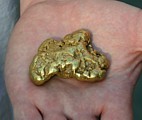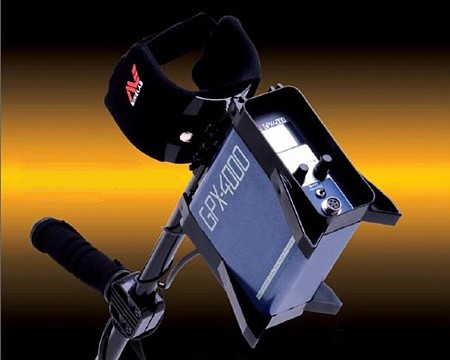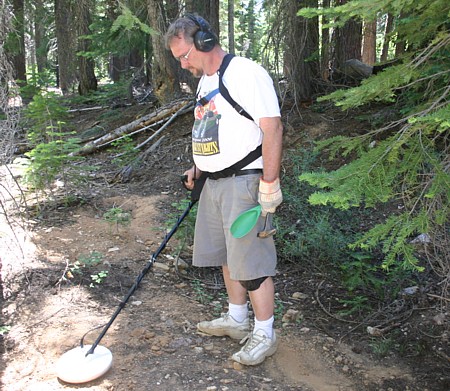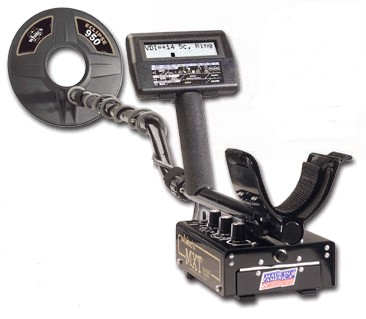What detector should I buy for Prospecting, or Which Metal Detector is Best For Me?

.

What detector should I buy for Prospecting, or Which Metal Detector is Best For Me? |
 |
||
|
. |
With the current high price for gold, there are a lot of folks interested in using a metal detector to recover gold Nuggets. Yet there are a lot of different choices as there are a number of brands and each brand has a number of detector options. How can a new prospector sort through all that and make a choice? Well, gold detecting isn't easy, and lot of new guys take 6 months to a year of prospecting before they find their first gold nugget. So I recommend that you don't cut corners - buy the very best detector you can afford, even if you have to save up for a while to purchase it. Take a look at the following information to help you choose the best one for you...... |
 |
|
This is probably the most common first question asked on the electronic prospecting forums by new guys, and there are a lot of opinions out there. I am presenting my own opinions here - I not a dealer, nor am I allied with any detector manufacturer, so I have no axes to grind one way or another in buying or selling metal detectors. If you are a new prospector trying to figure out what gold oriented metal detector to buy, you need to start by asking yourself two questions. First, What do I intend to do with my detector? Will I be using it every week? Some guys know they want to be able to go prospecting with their detector, but can only get out in the field for a few days each year, and that makes a difference. Second, you need to figure out what you can afford, even if you have to spend some time saving up. |
||
There is no simple one “best” detector for all purposes – that’s why the detector manufacturers make so many different models. When looking at the costs, many guys see how expensive the top of the line prospecting detectors really are and want to cut corners and buy a less expensive detector. Gold detecting isn’t easy, and that may not be a very good idea. You can sometimes get decent bargains in used equipment, but in the end you do get what you pay for. Commercially available gold nugget detectors use either VLF or PI (Pulse Induction) type technologies in their operation. Each has their place, but it is no coincidence that the guys doing the best in AZ and NV (and many other locations) are doing so with minelab pulse detectors in the GP and SD series. In certain parts of the mother lode country of California and also Alaska, there are places where the advantages of minelabs are not really significant because the mineralization is mild and the gold is shallow, but unless you know that those are the only places you will be hunting, you'd be better off in the long run with that more expensive minelab. Even in CA and AK, minelabs have a big advantage in many parts of those states. Additionally, the newer GPX series minelabs have made great strides in their capability to detect small gold. |
 |
|
| Many new guys wonder why they can't hunt for gold with an inexpensive machine made for hunting coins and jewelry - after all gold is a metal just like coins are. The simple fact is that in general coin and jewelry machines make very poor gold detectors as they just do not have the sensitivity or ability to handle ground mineralization that is required to find nuggets out in the gold fields. There are reasons for this. For searching parks and schools for coins and jewelry (and similar applications) any of the various coin detectors will be just fine and work very well -that what they are designed for. However, I think that for prospecting, they are a poor choice because they are just not designed for that. People who do coin and jewelry work like a quiet detector - the no audible threshold mode on so many coin and jewelry detectors is testimony of this. They don't want to hear hot rocks, little bits of foil and soil mineralization. The targets they do want to hear, like coins and jewelry are comparatively large. So the easiest way to make a detector quiet is to limit its gain and make sure it wonít be bothered by those faint targets. But that also makes those detectors (and this includes nearly all coin and jewelry type detectors) unsuitable for prospecting (except on real large nuggets). You see by comparison to most gold nuggets, coins and jewelry are 10 to 100 times larger than the nuggets you will want to hear (maybe even more in some cases). To hear those smaller nuggets, you need a detector that has a lot of gain - one that by necessity will be powerful enough to hear those hot rocks, little bits of foil and soil mineralization I mentioned before. That's why most coin and jewelry detectors (including the Safari) are simply unsuitable for nugget detecting - they've been limited in what they can hear to meet the demands of the folks who buy them. I'd expect most coin machines, with the standard large coil would have a problem hearing nuggets much smaller than 8 grains (about half a gram), even if they were fairly close to the surface. Since a good percentage of the nuggets found with a detector in many places are smaller than 8 grains, do you want to handicap yourself in such a way as to own a detector that will ignore the majority of the gold nuggets which are normally detected? I wouldn't. | ||
Second, most
ground in gold bearing areas is moderately to highly mineralized, so the
ability to ground balance in strongly mineralized soil is critical for a
gold machine. Most coin detectors are not made to hunt in strongly
mineralized locations because that's not where the coins and jewelry
generally are found. Many guys with prior experience coin hunting likely
have never have seen ground as wild as is common in many goldfields. Itís
fairly normal that goldfields have ground full of noises that sound like
targets or thousands of hot rocks lying all over the place - if your machine
canít deal with those, you are just out of luck. Extreme mineralization and
all the beeps, clicks and other noises it creates can hide even large
nuggets lying fairly close to the surface. |
 |
|
Gold is heavy and it tends to work its way down deep, and here the PI detectors like the Minelabs have an advantage in seeing gold deeper, especially in heavily mineralized soils. Because they can ignore considerable soil mineralization, large coils can be used where deep detection is an advantage. The disadvantage to most is the high cost of purchasing a complete PI outfit, including accessories and a few aftermarket coils. The other disadvantage is in prospecting areas with large amounts of very deep trash, where your PI may have you digging crater sized holes for deeply buried trash – this is the downside of deep detecting. Gold is hard to find and you should not intentionally handicap yourself getting a detector that will be at a disadvantage in competing with other prospectors who have PI detectors. The deeper your detector can see, the more places will be open to you in detecting. Many prospectors deal with the two different technologies by having both a PI and a VLF detector, but it is certainly not necessary to own two detectors to be successful in finding gold. |
||
| Recommended Metal Detectors:
|
||
|
I was plenty skeptical about the Minelab PI units when
they first came out, and I wondered if they were significantly better in the gold fields
beyond what the VLFs could do. It was only after seeing one produce gold in the field did I see
how much better they are, and that they were indeed a significant improvement over the
existing VLF models of the time. If you are going to detect for nuggets regularly in well
mineralized areas, it will be worth it for you to save up and spend the
money to purchase a pulse induction detector.
|
 |
|
|
In the end, much of this decision
comes down to what you plan to do with your metal detector, and what you can afford. If
you can afford it, get both a VLF and a PI machine. I own a Gold Bug 2, a Whites MXT, a Minelab GP
Extreme and a GPX 5000, and use them all. The MXT is a multipurpose detector, and between the
capabilities of these four different detectors, I pretty much have all the bases covered. If you plan to mostly
detect for coins and jewelry in local parks and the like, with only an occasional
prospecting trip, then a multipurpose machine like the MXT or Minelab Xterra 705 might be a
good choice. They sell new for around $700, and a couple hundred less if you can find one
that is used. The lobo supertraq is also a good inexpensive multipurpose machine that can
detect parks and schools, but can also do some work in the gold fields.
To the right I have links to several of the most popular metal detectors for gold oriented use and prospecting for sale through Amazon. To find more information on these detectors and their current prices, check out the Amazon links. There are also comments written by those folks who have purchased the one of these detectors. |
||
Want to know a little bit more about this crazy prospector guy? Well, here's a little bit more about me, and how I got into prospecting: Chris' Prospecting Story Interested in seeing more gold? Here are some interesting photos of beautiful Gold Nuggets